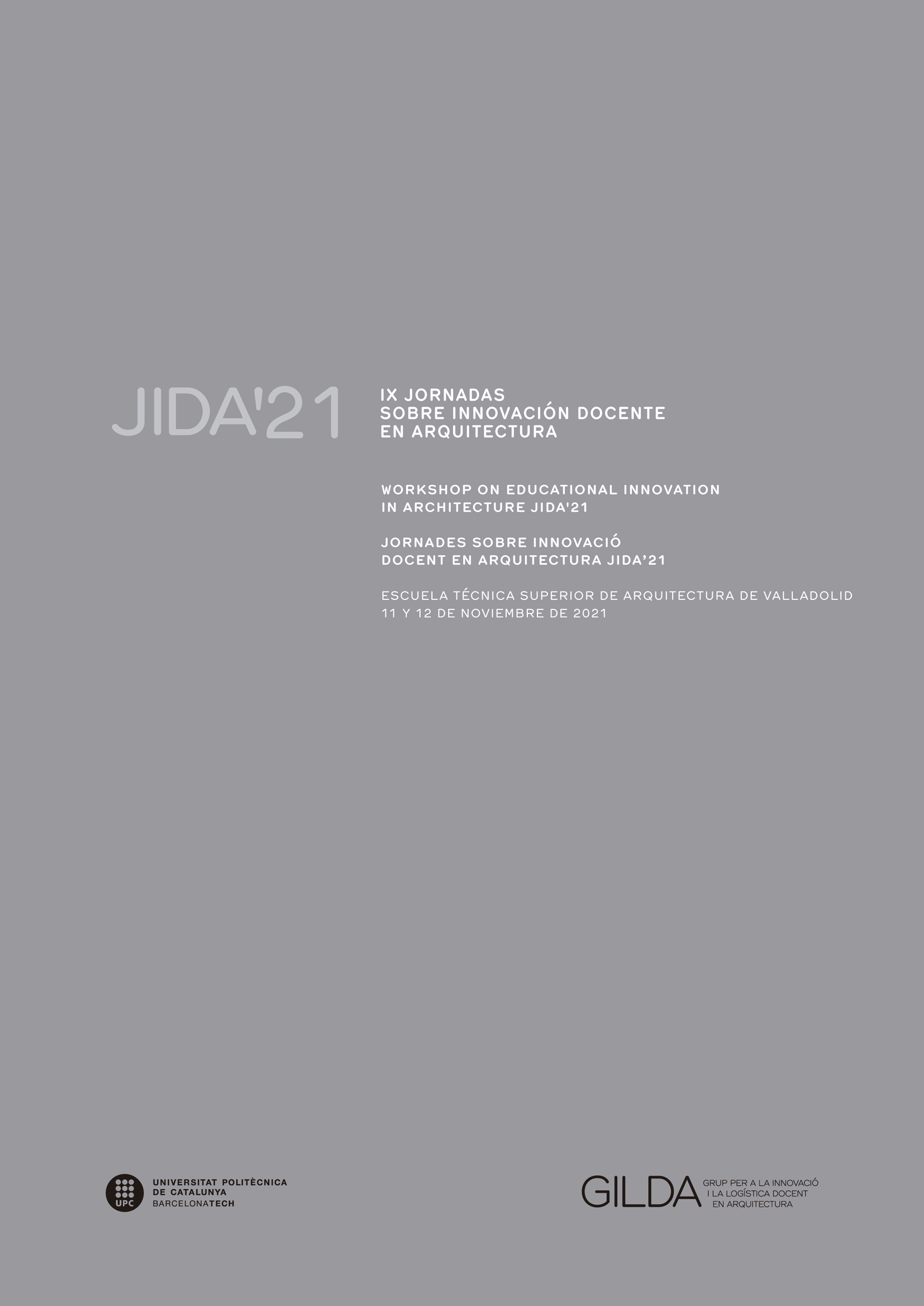Mapping Controversies as a resourse for analysing the inhabited space
DOI:
https://doi.org/10.5821/jida.2021.10573Keywords:
City, controversy mapping, actant network map, COVID-19, architectural projectsAbstract
In the social construction of the city, complex controversies arise over socially live issues that affect the lives of citizens. One of these controversies, accentuated by the Covid-19 pandemic, arises around the use of public space by terraces in city centres. This work explores the use of controversy mapping as a tool for critical analysis, diagnosis and project development that helps architecture students to analyse the actors involved, their relationships and the territory in which they are located. A training activity has been designed and carried out to develop the approach to the city using the actant network map. The results obtained show that the actant network map can be a visual tool that makes explicit the initial ideas about a controversy and facilitates critical analysis processes.
References
DEY, I. (2005). Qualitative data analysis. A user-friendly guide for social scientific. London: Taylor y Francis.
DELGADO PEÑA, J.J. y SUBIRES MANCERA, M.P. (2018) “La construcción social del lugar habitado a través de la cartografía colaborativa: Aprendiendo a expresar la propia realidad espacial” en García de la Vega, A. Reflexiones sobre educación geográfica. Revisión disciplinar e innovación didáctica. Madrid: Ediciones Universidad Autónoma de Madrid, pp. 25-38.
DILLON, J. y AVRAAMIDOU, L. (2020). “Towards a viable response to COVID-19 from the science education community” en Journal for Activist Science & Technology Education, 11(2), p. 1-6.
FONTANA, M.P. y CABARROSA, M. (2018). “Aprendiendo a ver a través de las ciudades” JIDA’18. VI Jornadas sobre Innovación Docente en Arquitectura Zaragoza. Zaragoza: Servicio de publicaciones de la Universidad de Zaragoza, 124-137.
FOGUÉ, U. (2020). “La ciudad dentro de casa” en Urbanbat Fest nov 2020. <http://9festival.urbanbat.org/la-ciudad-dentro-de-casa/> [Consulta: 18 de septiembre de 2020].
FOUCAULT, M. (2004). Nacimiento de la Biopolítica. Buenos Aires: Fondo de cultura económica.
GARCIA-RAMON, M.D.; ORTIZ GUITART, A.; y PRATS FERRERT, M. (eds.) (2014). Espacios públicos, género y diversidad. Geografías para unas ciudades inclusivas. Barcelona: Icaria.
GOETZ, J.P. y LECONMPTE, M.D. (1988). Etnografía y diseño cualitativo en investigación educativa. Madrid: Morata.
HERVÉ, N. (2019). “L’enquête dans la cartographie des controverses: principes pour une adaptation dans l’enseignement secondaire” en Simonneaux, J. La démarche d’enquête. contribution à la didactique des Questions Socialement Vives. Educagri éditions: (pp. 171-188).
IGLESIA, A.M. (2019). La revolución de las flâneuses. Girona: Cahiers.
ISLAM, M., et al. (2020). “COVID-19–Related Infodemic and Its Impact on Public Health: A Global Social Media Analysis” en The American Journal of Tropical Medicine and Hygiene, 2020, v.103, n.4, p.1621.
LATOUR, B. (2005). Reassembling the social: An introduction to actor-network-theory. NY: Oxford University Press.
LATOUR, B. (2007). “La cartographie des controversies”. Technology Review, p. 82-83.
LEFEBVRE, H. (2013). La producción del espacio. Madrid: Capitán Swing.
LEFEBVRE, H. (2020). El derecho a la ciudad. Madrid: Capitán Swing Libros.
LEGARDEZ, A. (2006). “Enseigner des questions socialement vives. Quelques points de repères” en L’école à l’épreuve de l’actualité. Enseigner les questions vives, 19-32.
MORALES-SOLER, E. y MINGUET-MEDINA, J. (2020). “Yo, tú, nosotras y el tiempo en el espacio habitado” JIDA’20. VIII Jornadas sobre Innovación Docente en Arquitectura Málaga, eAM’-UMA. Málaga: Uma Editorial.
MUTLU AVINÇ, G. y SELÇUK, S.A. (2020). “Bio-informed research in the discipline of architecture: A bibliometric analysis” en Periodica Polytechnica Architecture, 51(2), p. 142-148.
NUGENT, R. (2019). “Rethinking systems to reverse the global syndemic” en The Lancet. 393(10173), p. 726-728.
OMAU (2015). “Estudio de la ocupación de la vía pública por las terrazas de hotelería en el centro de Málaga”. Málaga: Ayuntamiento de Málaga. <http://www.omau-malaga.com/agendaurbana/subidas/archivos/arc_209.pdf > [Consulta: 20 abril 2020]
España. Orden EDU/2075/2010, de 29 de julio, por la que se establecen los requisitos para la verificación de los títulos universitarios oficiales que habiliten para el ejercicio de la profesión de Arquitecto. (2010). Boletín Oficial del Estado, 185, Disp I, de 31 de julio de 2010, páginas 66483 a 66487 (5 págs.) <https://www.boe.es/eli/es/o/2010/07/29/edu2075/dof/spa/pdf>
TELLERIA-ANDUEZA, K. y OTAMENDI-IRIZAR, I. (2020). “Urbanismo participativo para la docencia sobre espacio público, llegó el confinamiento” Bardí i Milà, B. y García-Escudero, D. En JIDA’20 VIII Jornadas sobre Innovación Docente en Arquitectura Málaga, eAM’-UMA. Málaga: Umaeditorial. 967-980.
VENTURINI, T. (2010). “Diving in magma: how to explore controversies with actor-network theory” en Public Understanding of Science, (2010,19(3), 258-273).
YANEVA, A. (2012). Mapping Controversies in Architecture. Chalgrove, UK: Ashgate Publishing, Ltd.



















